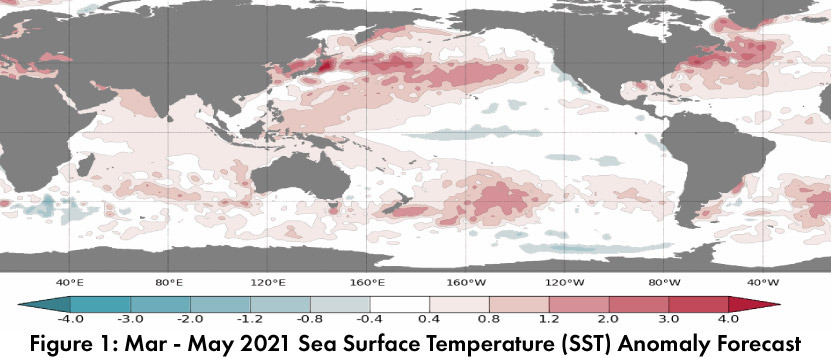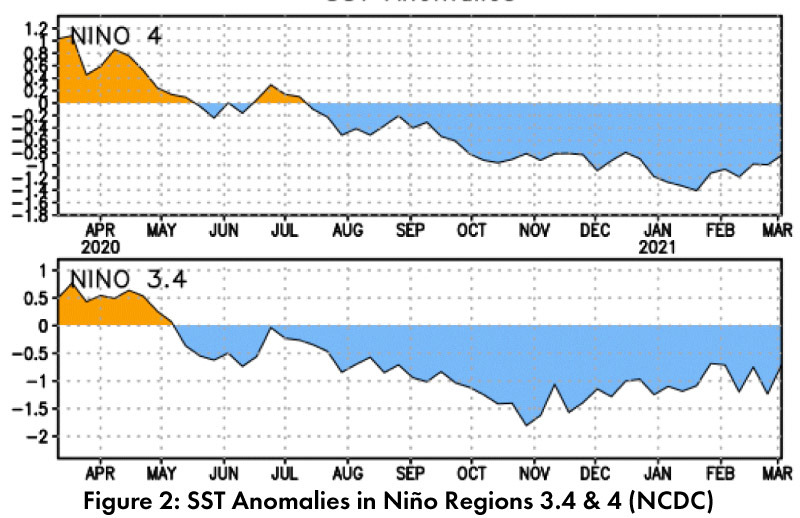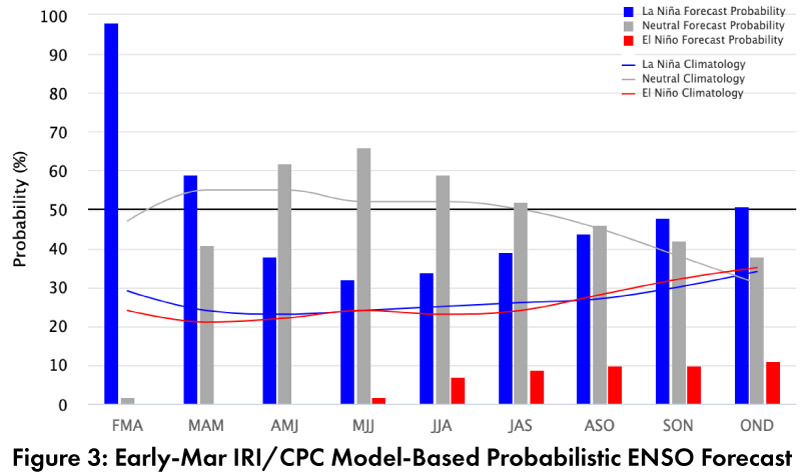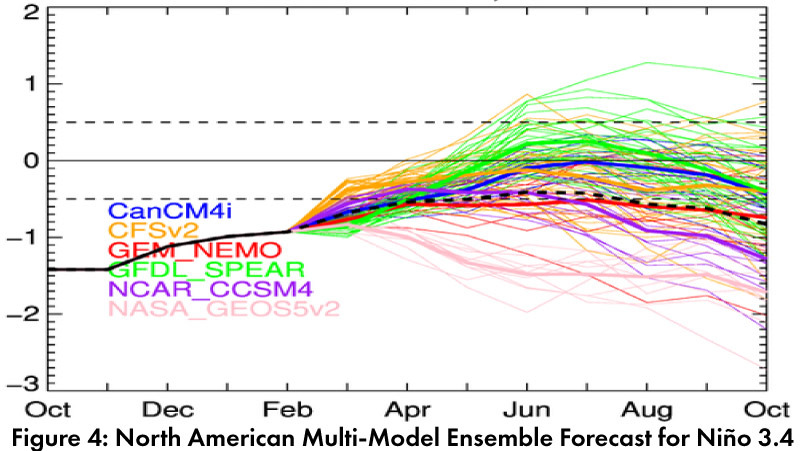Southwest Climate Outlook - El Niño Tracker - March 2021
Sea surface temperature (SST) anomaly forecasts point to normal or slightly below normal conditions across much of the equatorial Pacific (Fig. 1). The current anomalies show a similar pattern, as they continue to move towards neutral conditions (Fig. 2). International climate outlooks reflect this trend, and see La Niña conditions waning along with winter, and returning to ENSO-neutral conditions over spring 2021.


Forecast Roundup: On Mar 10, the Japanese Meteorological Agency (JMA) maintained its observation of an ongoing La Niña, with an 80-percent chance that conditions “will fade into ENSO-neutral” by spring. On Mar 11, the NOAA Climate Prediction Center (CPC) ENSO status was at La Niña Advisory. The CPC called for a 60-percent chance of a transition to ENSO-neutral during spring. On Mar 11, the International Research Institute (IRI) issued an ENSO Quick Look (Fig. 3), noting “most key atmospheric variables are consistent with continued La Niña conditions.” On Mar 16, the Australian Bureau of Meteorology was at official La Niña status, but stated “La Niña is nearing its end.” They highlighted neutral oceanic conditions, and “a number of atmospheric indicators (that) remain at La Niña levels.” They emphasized this could cause La Niña precipitation patterns to stick around a little longer. The North American Multi-Model Ensemble (solid and dashed black line, Fig. 4) indicates La Niña conditions are expected to return to ENSO-neutral conditions over the next few months.


Summary: La Niña conditions are present and should remain in place through spring. The monthly and seasonal climate outlooks reflect these conditions, with forecasts of mostly drier than normal conditions in the Southwest over the same period. Storm activity in the Southwest (including heavy snow) means this La Niña feels less extreme compared to years with nearly zero winter precipitation. Despite these events, this winter is following an expected pattern with less frequent precipitation events and lower seasonal totals compared to normal (see Fig. 3 on p 2). There are exceptions, but this is a pretty robust and predictable outcome in the U.S. Southwest for La Niña.
Online Resources
- Figures 1 - Australian Bureau of Meteorology - bom.gov.au/climate/enso
- Figure 2 - NOAA - Climate Prediction Center - cpc.ncep.noaa.gov
- Figure 3 - International Research Institute for Climate and Society - iri.columbia.edu
- Figure 4 - NOAA - Climate Prediction Center - cpc.ncep.noaa.gov

